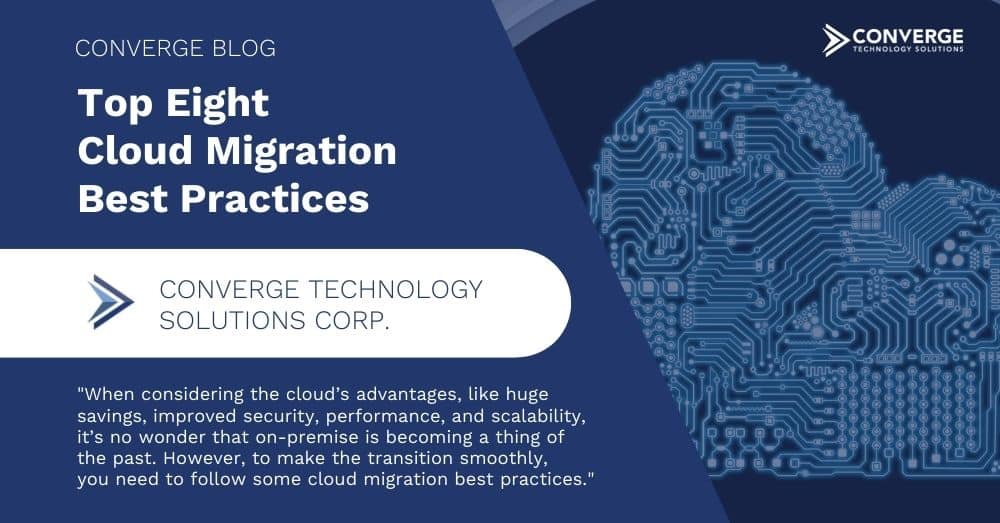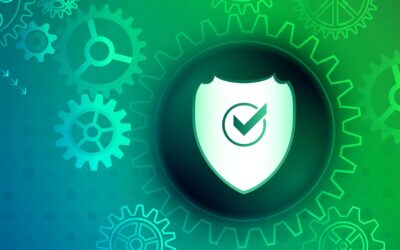The endless benefits that come with a transition to the cloud are hard for any organization to resist. When considering the cloud’s advantages, like huge savings (up to 25% in cost savings according to CIO), improved security, performance, and scalability, it’s no wonder that on-premise is becoming a thing of the past. However, to make the transition smoothly, you need to follow some cloud migration best practices.
This article looks at the top 8 ways organizations can make their cloud migration journey a smooth and successful one.
1- Create a (Good) Migration Plan
Making a plan sounds obvious, but what’s less obvious is how to create an effective migration plan. It must include an intelligent and data-driven business case for adopting cloud, and then provide clear, phased migration planning that will take you from the pilot to post-migration management.
Gartner’s ‘five Rs’ model is commonly referenced when discussing and deciding on the most appropriate cloud migration strategy. The Rs stand for:
- Rehost: A “lift and shift”, often used by organizations wanting to quickly migrate an application to a managed cloud service.
- Replatform: Keeping the core architecture but reducing management and operations costs by moving specific IT functions (like database management) to the cloud.
- Repurchase: Shifting away from a homegrown application to a new private or public cloud platform to take advantage of its benefits.
- Refactoring: A challenging but rewarding strategy that involves re-architecting applications for the cloud to meet business requirements.
- Retire: Eliminating products that are no longer needed in a cloud environment.
2- Conduct a Thorough Discovery and Elimination Exercise
Before migrating from on-premise to private, public, or hybrid cloud, you should make sure you have a clear picture of your organization’s existing infrastructure and applications. This discovery phase will help you better understand what can be migrated, what can be retired, and where the most cumbersome migration challenges will lie.
One of the biggest reasons for cloud moves not working out in the long term is companies not fully understanding the interface of cloud with existing on-premise systems.
Once you begin to understand all the areas where the cloud can streamline your uniquely-created organization, you will see opportunities everywhere:
- To move away from on-premise hardware
- Take advantage of SaaS
- Cut down your technology footprint
- And do so much more
3- Get a Grip on Licensing and Migration Costs
Migrating data and applications to the cloud is exciting and should result in significant cost savings for your organization. That said, don’t let that excitement get the better of you by running up unnecessarily high licensing and cloud migration costs.
Keep detailed documentation of the costs and ensure you understand how the upfront investment and ongoing management and licensing fees match with the return on investment of your migration.
Talking to vendors and cloud service providers can help you stay on track, as can software asset management (SAM) tools.
4- Train Your Staff and Bring in the Right Expertise

Much of the cloud is about outsourcing IT responsibilities to skilled professionals, but you’ll still need a modern blend of expertise in-house to keep things running smoothly. If your IT team lacks cloud knowledge, consider investing in training or bringing in new talent.
5- Watch Out for Security and User Access Gaps
It’s easy to think that getting rid of your on-premise IT and moving everything to data centers means you no longer have to worry about security issues. But even with cloud computing, you’ll have to bear in mind things like role-based access and endpoint security.
6- Take it Slow and Steady
The world of cloud migrations comes with its own set of “tortoise and hare” stories. Some organizations have tried to do too much too quickly and seen their operations fall apart because core functionality was not available.
One of the most important cloud migration best practices, therefore, is to start small as you move towards a full migration. Pause along the way to ensure everything is still running smoothly, safely, and compliantly across the board.
7- Focus on Automating the Migration Wherever Possible
The biggest concerns about migrating to cloud-based services are that your business may need to:
- Go through periods of downtime
- Make huge time and cost investments
- Face greater security risks during migration
It’s why identifying and taking advantage of repeatable, automated migration processes can help to mitigate these concerns. There are a host of tools and scripts that can make this much easier, also you can follow a cloud migration checklist.
8- Build a Robust Cloud Governance Framework
A solid cloud governance framework that has clear rules and policies can make cloud adoption and management much more secure.
By laying out plans to deal with the risks that come with outsourcing operations to third-party cloud services, you can feel comfortable that there is a handbook of procedures and principles to fall back on if challenges arise.
Migrate from On-Premise to Cloud with an Expert Managed Services Provider
Converge has helped more than 2000 businesses find success with technology from our 50-plus office locations.
With certified consultants and industry-leading vendor partnerships, we make the cloud migration project as painless, efficient, and impactful as possible.
Discuss your cloud migration needs with us today.
Much of the cloud is about outsourcing IT responsibilities to skilled professionals, but you’ll still need a modern blend of expertise in-house to keep things running smoothly. If your IT team lacks cloud knowledge, consider investing in training or bringing in new talent.





